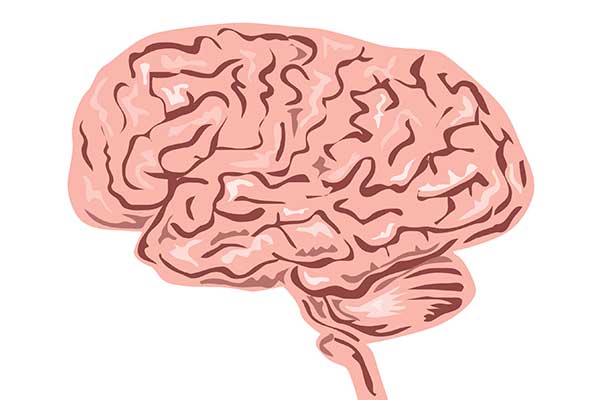
A brain injury can be caused by a variety of accidents, but one of the most common causes for a traumatic brain injury is a fall, according to the Mayo Clinic. A traumatic brain injury typically occurs after a jolt or violent strike to the head. Sometimes, these injuries may occur when an object penetrates the skull, such as a bullet.
A mild traumatic brain injury is temporary, but it can become more severe and life threatening if it is not taking care of immediately. A more serious injury, such as bleeding in the brain, can leave a victim with long term deficits. Understanding the most common cause is only half of the equation, as a person should also know what to look out for with a TBI.
Falls are the most common cause of a traumatic brain injury, and they can include slip and fall accidents as well as trip and fall accidents. Also, falling from a great height can lead to a traumatic brain injury in children and adults.
The Most Common Types of Falls That Lead to Traumatic Brain Injuries
Falls come in all shapes and sizes, and they can affect victims of all ages. Below are some of the common fall injuries that cause traumatic brain injuries:
Falls from a Great Height
Falling from a great height can lead to more than just a traumatic brain injury, depending on how far the fall is. For example, individuals working in construction who are working several stories above the ground are at high risk for fall injuries, including a traumatic brain injury.
For small children, a fall that leads to a traumatic brain injury does not have to be several stories high. For example, a fall from playground equipment onto a hard surface could lead to a traumatic brain injury.
Another type of fall from a great height would be falling off of the roof of your house. These injuries are more common during the holidays when homeowners are hanging Christmas lights outside of their home. Annual home maintenance chores, like cleaning your gutters or inspecting your roof, can also lead to falling from the rooftop and suffering serious injuries.
Most of these accidents are preventable. Using the example of a child falling from playground equipment, if the equipment does not have the proper safety bars in place, it increases the chances of a child falling from the playground equipment. The owner of the playground equipment could be at fault for the child’s injuries.
Slip and Fall Accidents
Slip and fall accidents often fall under premises liability. A slip and fall can occur inside or outside of a building. Inside, a person could slip and fall on a wet surface, such as a spill in a grocery store aisle. Outside, a person might slip and fall on a slick surface, such as an icy sidewalk.
Slip and fall accidents are almost always preventable. For example, a slippery surface inside of a commercial building would be the owner’s responsibility. They should have cleaned up the wet surface as quickly as possible to prevent any injury. The same goes for icy surfaces outside of a residence or commercial building. It is common knowledge that ice is a fall hazard, therefore owners should remove ice buildup on their sidewalks and driveways immediately after a snowstorm to prevent injury.
Commercial property owners are held to a higher standard because they invite guests freely onto their property as part of their business operation. Commercial property owners and their employees need to remove any safety hazards from their property within a reasonable timeframe. There is no set time for what is considered reasonable. Instead, it would depend on the situation. For example, immediately after a snowstorm, a property owner may not have time to place salt and remove any slick surfaces. Within an hour after the storm, they should have begun the process of removing any ice present, especially if it is during business hours when customers would be entering the property.
Most commercial property owners will hire a service to help maintain their grounds and remove safety hazards, such as ice on their sidewalks and parking lots. If that service does not fulfill their contract, they may be held liable along with the commercial property owner.
Trip and Fall Accidents
Another common fall that can lead to a traumatic brain injury is a trip and fall. These accidents can occur on private and commercial property. There does not have to be a physical object in the way, but there can be a defect that causes someone to trip and fall. For example, an uneven sidewalk could cause a person to trip and fall and strike their head on the concrete. If the owner knew about this defect and did nothing to fix it or warn those walking on the surface about it, they could be found liable for that trip and fall accident.
Another example would be tripping and falling down the stairs. If the owner has obstacles that increase the risk of someone tripping and falling down a stairwell, or their stairs are in need of repair and create a tripping hazard, they could be liable for any trip and fall accidents that occur on their property.
Speak with an Attorney about Your TBI
No matter how your traumatic brain injury occurred, you may be entitled to compensation. Speak with an injury attorney that has experience handling traumatic brain injury cases. You may receive compensation for your medical costs, lost wages, and your pain and suffering.
Your attorney will file a lawsuit against the property owner for neglecting to remove safety hazards on their property – known as a premises liability lawsuit.
To explore your options and see if your case qualifies for compensation, schedule a no-obligation consultation today. You can call our team directly or request more information online regarding our legal services or your injury case.


